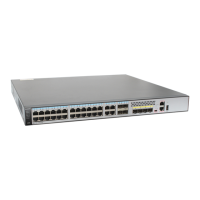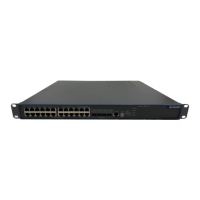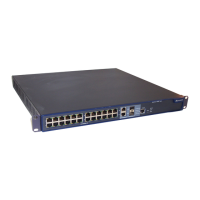The NM station manages a device in the following manners:
l Sends requests to the managed device to perform the GetRequest, GetNextRequest,
GetResponse, GetBulk, or SetRequest operation, obtaining data and setting values.
l Receives alarms from the managed device and locates and rectify device faults based on
the alarm information.
In the following configuration, after basic SNMP functions are configured, the NM station can
manage the device in these manners. For details on how to configure finer management such as
accurate access control or alarm module specification, see the following configuration
procedures.
1.3.1 Establishing the Configuration Task
Before configuring a device to communicate with an NM station by running SNMPv2c,
familiarize yourself with the applicable environment, complete the pre-configuration tasks, and
obtain the data required for the configuration. This will help you complete the configuration task
quickly and accurately.
Applicable Environment
SNMP needs to be deployed in a network to allow the NM station to manage network devices.
If your network is a large scale with many devices and its security requirements are not strict or
its security is good (for example, a VPN network) but services on the network are so busy that
traffic congestion may occur, SNMPv2c can be deployed to ensure communication between the
NM station and managed devices.
Pre-configuration Tasks
Before configuring a device to communicate with an NM station by running SNMPv2c, complete
the following task:
l Configuring a routing protocol to ensure that the switch and NM station are routable
Data Preparation
Before configuring a device to communicate with an NM station by running SNMPv2c, you
need the following data.
No.
Data
1 SNMP version, SNMP community name, address of the alarm destination host,
administrator's contact information and location, and SNMP packet size
2 (Optional) ACL number, IP address of the NM station, MIB object
3 (Optional) Name of the alarm-sending module, source address of trap messages,
queue length for trap messages, lifetime of trap messages, expiry time of informs,
allowable number of inform retransmissions, allowable maximum number of informs
to be acknowledged, aging time of log messages, and allowable maximum number
of log messages about the trap and inform events in the log buffer
4 (Optional) Number of interfaces indexed by fixed numbers
Quidway S5700 Series Ethernet Switches
Configuration Guide - Network Management 1 SNMP Configuration
Issue 01 (2011-10-26) Huawei Proprietary and Confidential
Copyright © Huawei Technologies Co., Ltd.
16

